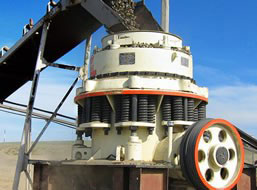The crushing mechanism in a ball mill involves a combination of impact, attrition, and abrasion forces that break down particles into finer sizes. Here’s a detailed breakdown of how it works:
1. Impact (High-Energy Collision)
– As the ball mill rotates, the grinding media (usually steel or ceramic balls) are lifted to a certain height by the mill’s rotation.
– When they fall back due to gravity, they strike the material with significant force, causing fracture through impact.
– This is most effective for brittle materials and coarse grinding.
2. Attrition (Particle-on-Particle Grinding)
– Smaller particles are ground by shear and rubbing actions between the balls themselves and between the balls and the mill liner.
– This mechanism is dominant in fine grinding where repeated collisions reduce particle size gradually.
3. Abrasion (Frictional Wear)
– The sliding motion of balls against each other and the mill lining causes surface wear on particles, leading to size reduction through surface erosion.
– This is particularly effective for softer materials.
 Key Factors Influencing Crushing Efficiency:
Key Factors Influencing Crushing Efficiency:
– Mill Speed: Optimal speed ensures balls cascade (not too fast to stick to walls, not too slow to fall freely).
– Ball Size & Material: Larger balls for impact crushing, smaller ones for fine grinding.
– Feed Size & Material Hardness: Brittle materials fracture more easily under impact.
– Filling Ratio (Ball-to-Material Ratio): Affects energy transfer efficiency.
– Liner Design: Influences lifting and cascading of grinding media.
 Applications:
Applications:
Ball mills are widely used in mining (ore grinding), cement production, pharmaceuticals, and ceramics due to their ability to produce fine powders efficiently.
Would you like details on optimizing ball mill performance?





Leave a Reply